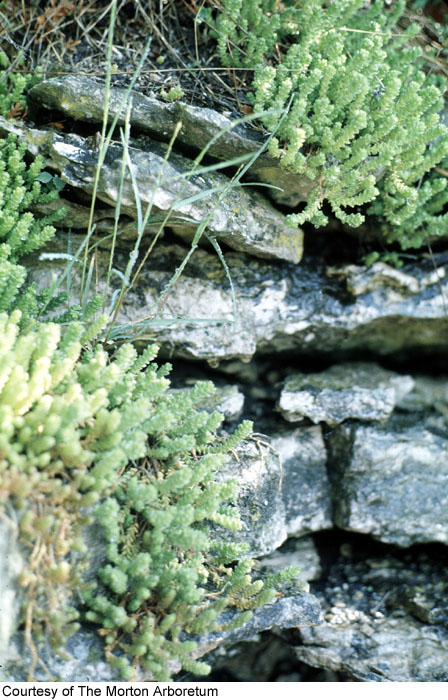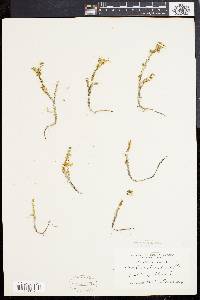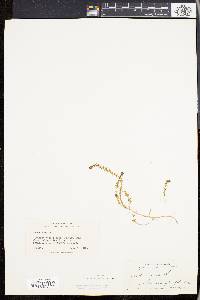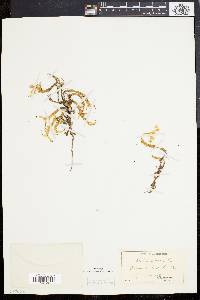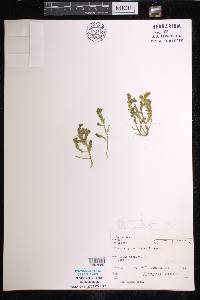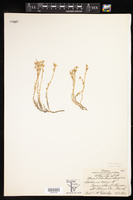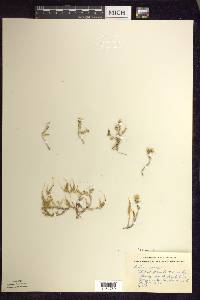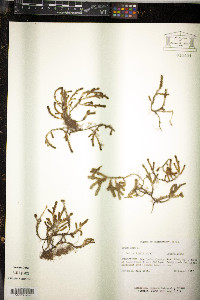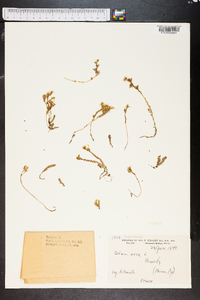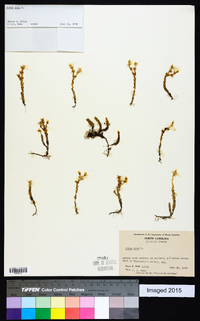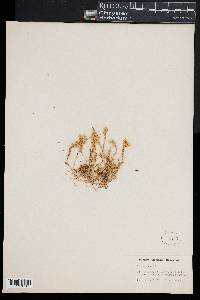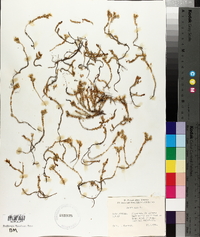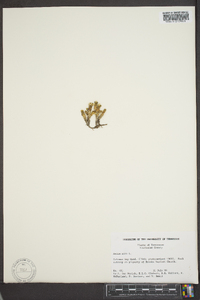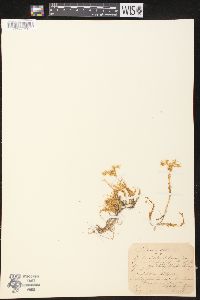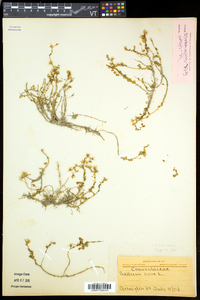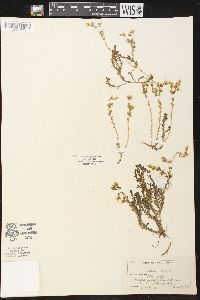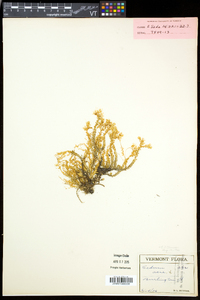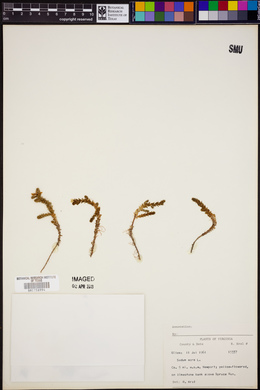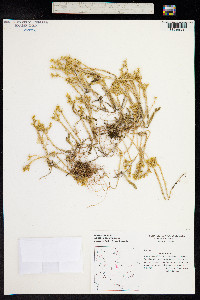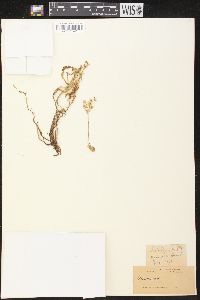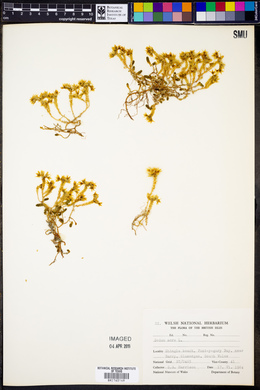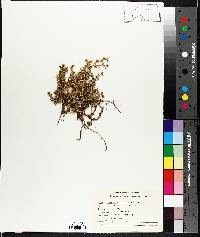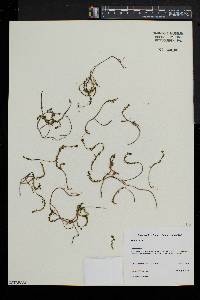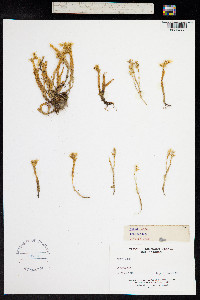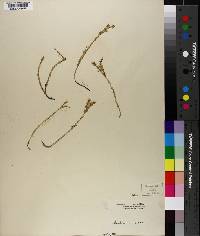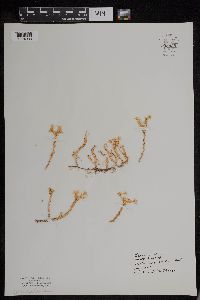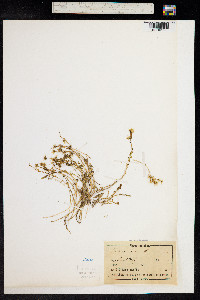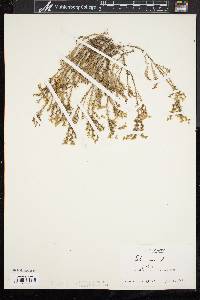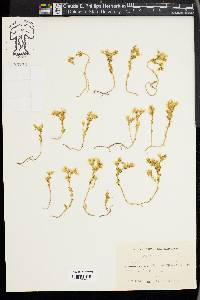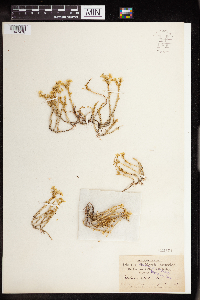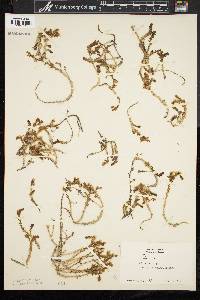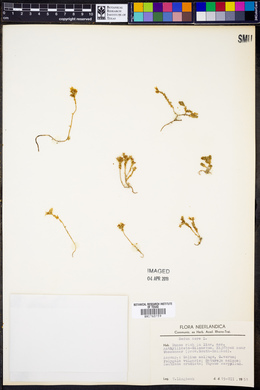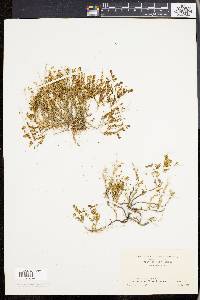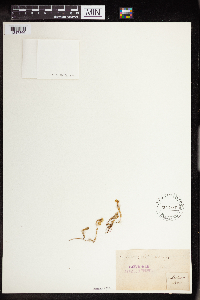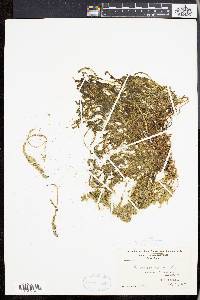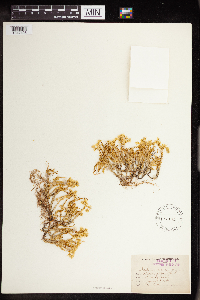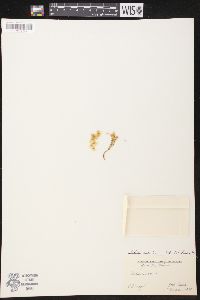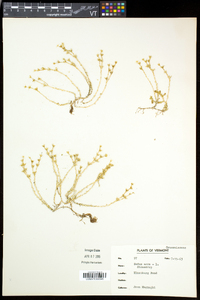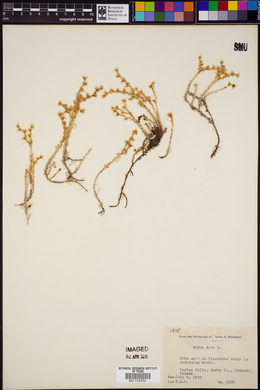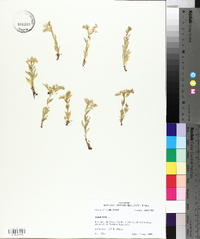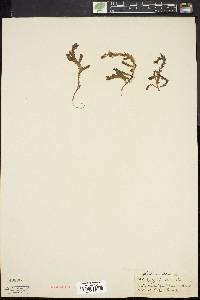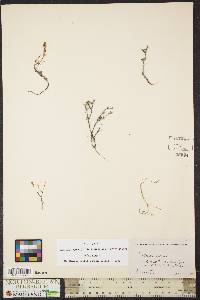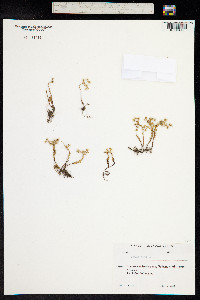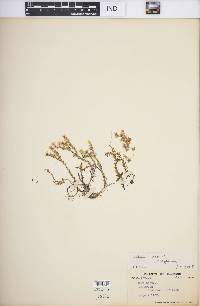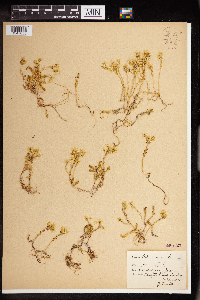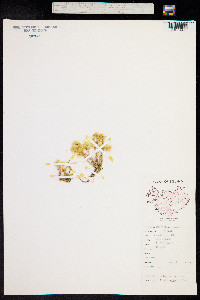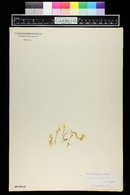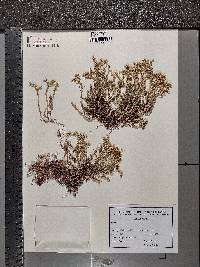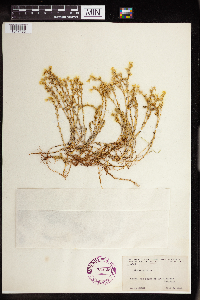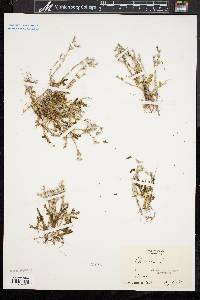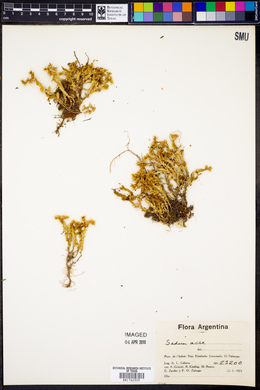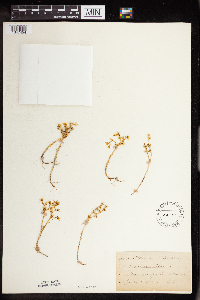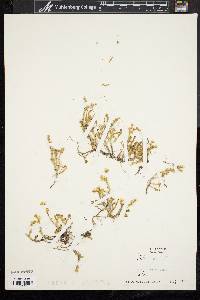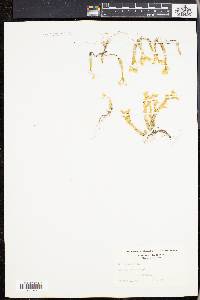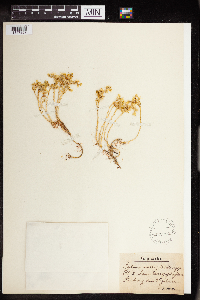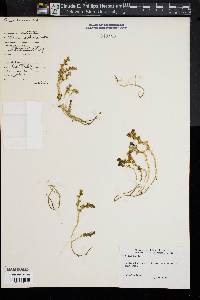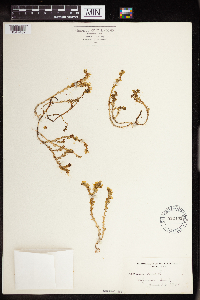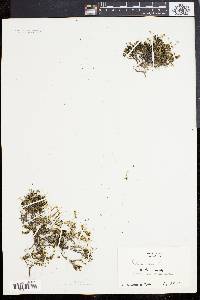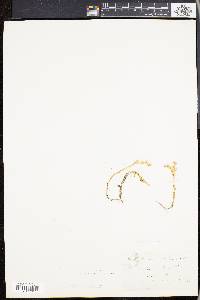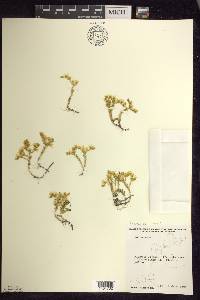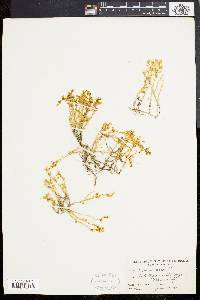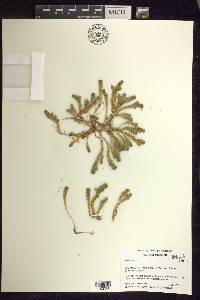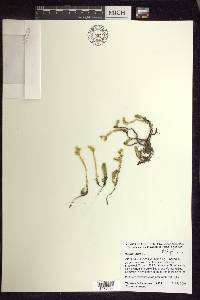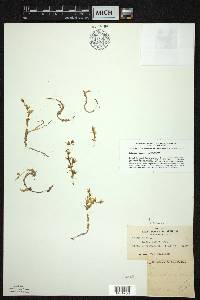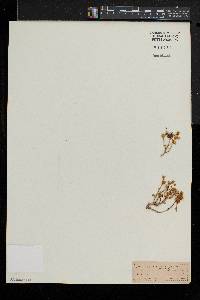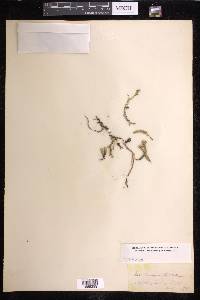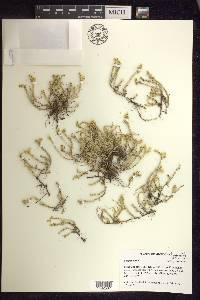
|
|
|
|
Family: Crassulaceae
Mossy Stonecrop
|
Herbs, perennial, mat-forming, glabrous. Stems trailing (nonflowering shoots ascending at tip), laxly branched, not bearing rosettes. Leaves (usually deciduous, if persistent, then blade white, soft, papery), alternate, (densely imbricate), spreading, sessile; blade yellow-green, not glaucous, triangular-ovate, terete to semiterete (elliptic in cross section), (2-)5(-8) × 1-4 mm, base obtusely short-spurred, not scarious, apex obtuse. Flowering shoots erect, usually simple, 5-10(-15) cm; leaf blades triangular-ovate, base short-spurred; offsets not formed. Inflorescences cymes, 2-12-flowered or flowers solitary, monochasially (1-)2(-3)-branched; branches not recurved, rarely forked; bracts similar to leaves, smaller. Pedicels absent or to 1 mm. Flowers 5-merous; sepals erect to spreading, distinct basally, green, oblong-ovate, unequal, 2-3 × 1.3-2.3, mm, apex obtuse; petals spreading, distinct, bright yellow, oblong-ovate to lanceolate, not carinate, 5-9 mm, apex acute to acuminate; filaments yellow; anthers yellow, (oblong); nectar scales yellowish green, square. Carpels stellately patent in fruit, distinct, yellowish. 2n = 40, 60, 80, 100, 120. Flowering spring. Rock outcrops, rock walls, calcareous habitats, disturbed sites; 0-2400 m; Greenland; Alta., B.C., Man., N.B., Nfld. and Labr. (Nfld.), N.S., Ont., P.E.I., Que., Sask.; Ala., Colo., Conn., Idaho, Ill., Ind., Iowa, Ky., Maine, Md., Mass., Mich., Minn., Mont., N.H., N.J., N.Y., N.C., Ohio, Oreg., Pa., R.I., S.Dak., Tenn., Vt., Va., Wash., W.Va., Wis., Wyo.; Europe; Asia (Turkey); n Africa; introduced in South America (Argentina, Chile). Sedum acre is native in Greenland. It is naturalized in North America across the northern United States and southern Canada from Quebec to North Carolina in the east and from British Columbia to Oregon in the west. Sedum elrodii was found near Somers in Flathead County, Montana. It is known only from a fragmental type specimen. R. T. Clausen (1975) considered it a naturalized form of S. acre with ovate leaf blades, basally connate petals, and procumbent and branched stems from a fleshy rootstock.
Perennial herb 5 - 10 cm tall Stem: decumbent, rooting at the nodes, forming a mat along the soil surface. Leaves: evergreen, alternate, closely overlapping, 2 - 6 mm long, egg-shaped with a blunt tip and a spurred base, nearly circular in cross-section, succulent. Dead leaves tend to be perisistent on flowering stems. Flowers: borne terminally on an inflorescence usually made of two short-branched flat-topped clusters (cymes). The five sepals are 2 - 3 mm long and oblong to egg-shaped, while the five yellow petals are 5 - 10 mm long, broadly lance-shaped, spreading, and fused for 0.5 mm at the base. Fruit: a long-beaked dry follicle, 4 - 5 mm long, divergent, opening vertically and releasing many seeds. Similar species: Sedum acre, Sedum reflexum, Sedum sarmentosum, and Sedum sexangulare have yellow flowers. Sedum sarmentosum is easy to distingush from the others by its whorled leaf arrangement. Sedum reflexum differs by having erect follicles and five- to nine-parted flowers, while S. sexangulare has narrow, linear leaves. Flowering: late May to mid July Habitat and ecology: Introduced from Eurasia, this species occasionally escapes from rock gardens into sandy cemetaries and grassy and rocky areas. Occurence in the Chicago region: non-native Etymology: Sedum comes from the Latin word sedo, meaning "to sit," referring to the manner in which some species attach to walls and rocks. Acre means "sharp or pungent." Author: The Morton Arboretum Fibrous-rooted evergreen perennial from creeping stems, forming mats; flowering stems 5-10 cm, the lower part commonly clothed with persistent dead lvs; lvs crowded, imbricate, ovoid, terete, 2-5 mm, blunt; infl of 2 (-several) short, branched, sympodial cymes; fls 5- merous; pet yellow, 6-8 mm, spreading, connate for ca 0.5 mm; filaments basally adnate to the minute cor-tube; carpels erect in fl, divergent in fr; 2n=80. Native of Eurasia, cult. in many forms, and often escaped in our range, especially northward. June, July. Gleason, Henry A. & Cronquist, Arthur J. 1991. Manual of vascular plants of northeastern United States and adjacent Canada. lxxv + 910 pp. ©The New York Botanical Garden. All rights reserved. Used by permission. From Flora of Indiana (1940) by Charles C. Deam Reported as an escape in 5 counties. I found it as a common plant over an acre or more in shallow soil on the bank of Pipe Creek in Cass County at Pipe Creek Falls and near the old mill at Dora in Wabash County. When it escapes from cultivation, it will persist if it finds rocky soil or a wall of stone. …… Indiana Coefficient of Conservatism: C = null, non-native Wetland Indicator Status: N/A |

